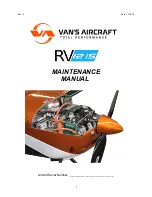
Apply some tension to check if the A risers stay on top and the lines are not
tangled. Take a step back, bow down a little and run forward. After the initial
inflation smoothly move the hands with the risers up and over your head until
the wing will be directly above you. Check the wing and let the A risers loose.
Pump out possible faults and keep an eye on position of the paraglider.
Side drift is corrected best by moving yourself always under center of the
canopy (launch space permitting). In order to keep wing in the air the
suspension lines must stay taut all the time, so in light winds you will have to
run forward. With stronger winds you can control the wing while standing
still.
When leaving the ground apply some brakes, then release it after gaining
some distance from the ground. Keep your hands relaxed.
Reverse launch
To be used when wind speed exceeds 3 m/s. After clipping the risers into
carabiners as for the forward launch, turn back to face the wing, moving one
riser group over your head. As a consequence, you will have the risers
crossed.
Unclip the brake handles from rear risers and grip it outside of the risers
without crossing neither arms nor lines. In this way you steer the left side
with you left hand and vice versa. Now take corresponding A risers on both
sides (still keeping brake handles in your hands).
Make sure that the wing inflates symmetrically and the lines are not tangled.
Building up tension with a few steps back and simultaneously lifting the A
risers (do not pull them towards you) will make the paraglider rise. When it
arrives over your head, stabilize it with the brakes, check again if all lines are
clear and the cells inflated.
When turning into wind, remember to turn the right way (hint: always do it
the same direction) and to keep the lines taut (loaded) at all times. The turn
itself should be quick and smooth. While turning you have to release the
brake handles and grip them again facing forward. Last check of the wing &
free space to launch and off you go, running into wind with eventual light
braking when taking off.
CAUTION: when deflating the canopy in strong winds (e. g. aborting a
launch), use the B risers, not the brakes. Using the brakes in strong wind
can lift the pilot up and drag him/her back.
TURNS
Coden is an agile wing, with smooth reactions to the steering inputs.
Handling is actually easy and forces grow proportionally to position of the
brakes. Adding some weight shift will make the paraglider turn really quick
and tight.
10
Содержание Coden
Страница 1: ......
Страница 24: ...24...
Страница 27: ...Stabilizer Cell Leading edge Intakes Trailing edge Risers Mini ribs Ribs...
Страница 28: ...MADE IN EUROPE V 08 02 2013...











































